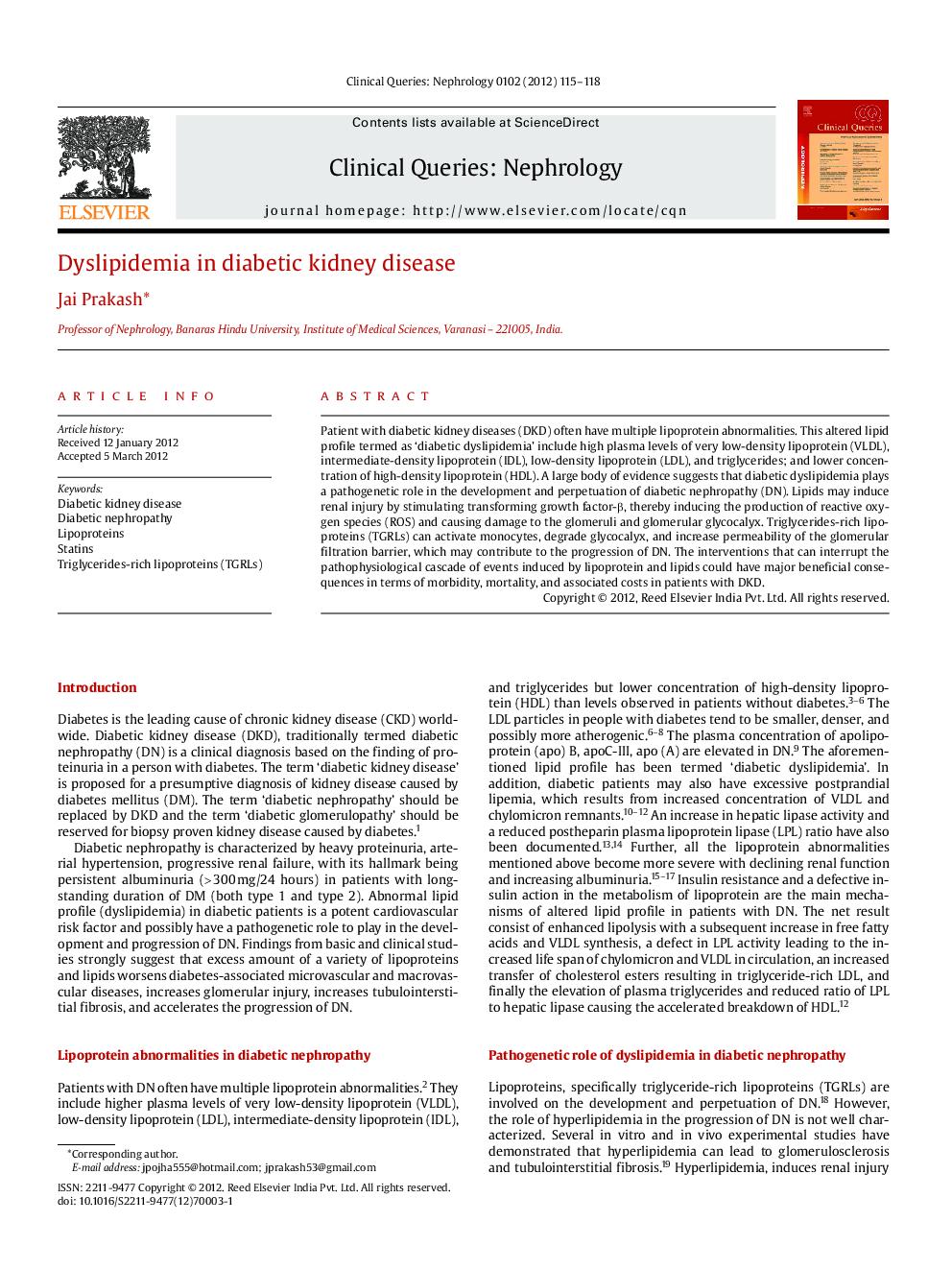| Article ID | Journal | Published Year | Pages | File Type |
|---|---|---|---|---|
| 3108037 | Clinical Queries: Nephrology | 2012 | 4 Pages |
Patient with diabetic kidney diseases (DKD) often have multiple lipoprotein abnormalities. This altered lipid profile termed as ‘diabetic dyslipidemia’ include high plasma levels of very low-density lipoprotein (VLDL), intermediate-density lipoprotein (IDL), low-density lipoprotein (LDL), and triglycerides; and lower concentration of high-density lipoprotein (HDL). A large body of evidence suggests that diabetic dyslipidemia plays a pathogenetic role in the development and perpetuation of diabetic nephropathy (DN). Lipids may induce renal injury by stimulating transforming growth factor-β, thereby inducing the production of reactive oxygen species (ROS) and causing damage to the glomeruli and glomerular glycocalyx. Triglycerides-rich lipoproteins (TGRLs) can activate monocytes, degrade glycocalyx, and increase permeability of the glomerular filtration barrier, which may contribute to the progression of DN. The interventions that can interrupt the pathophysiological cascade of events induced by lipoprotein and lipids could have major beneficial consequences in terms of morbidity, mortality, and associated costs in patients with DKD.
